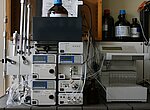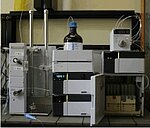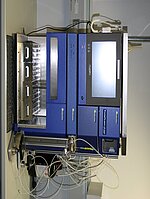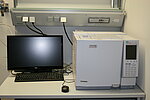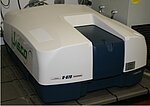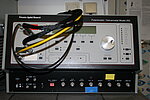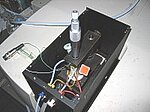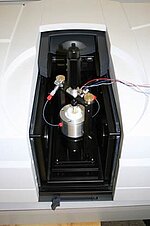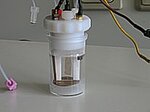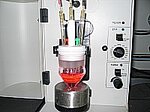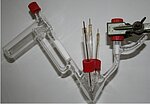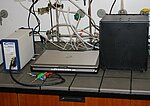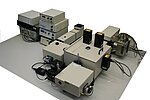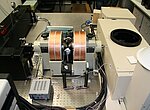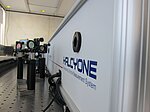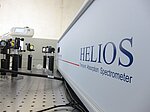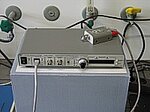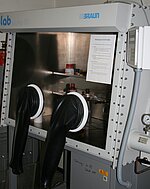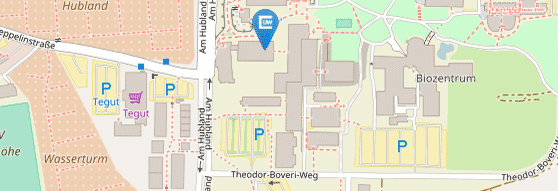Equipment
Chromatography
Jasco recycling GPC/HPLC-system including a four channel UV-vis-detector (195-700 nm) and fraction collector.
- preparative PSS GPC-columns (SDV / 10 µ / 20 x 600 mm / 50 Ǻ, 100 Ǻ, 1000 Ǻ),
- (semi-)preparative MN HPLC-columns (VP Nucleosil / 5 µ / (10 x 250 mm), 21 x 250 mm / 120 Ǻ),
- analytical MN HPLC-column (EC Nucleosil / 5 µ / 4 x 250 mm / 120 Ǻ)
UV-vis-NIR Spectroscopy
Spectroelectrochemistry
Spectroelectrochemical experiments in reflexion were performed in our Jasco V-670 Spectrometer in combination with a specially designed sample compartment consisting of a cylindrical quartz cell, a platinum disc electrode (6 mm), a gold-covered metal (V2A) plate as the counter electrode and a Ag/AgCl pseudo-reference electrode.
Spectroelectrochemical experiments in reflexion were also performed in our Agilent Cary 5000 Spectrometer in combination with a newly designed sample compartment consisting of a cylindrical PTFE cell with a sapphire window and an adjustable three in one electrode (6 mm platinum disc working electrode, 1 mm platinum counter and pseudo reference electrode).
Cyclic voltammetry
Photocatalysis Setup
Fluorescence Spectroscopy
Edinburgh Instruments FLS 980 flourescence lifetime spectrometer with double grating excitation and emission monochromator.
Steady state emission and excitation spectra
- excitation source: 450 W Xenon lamp
- detector: single photon counting PMT (R928P, 200-870 nm) in peltier cooled housing and Hamamatsu R5509-42 photomultiplier in nitrogen cooled housing (600-1400 nm)
Absolute quantum yields by using an integrating sphere
Lifetime option
- excitation source: ps laser diodes
- detector: high speed PMT (H10720)
ns Transient Absorption Spectroscopy
fs Transient Absorption Spectroscopy and Fluorescence Upconversion
The Halcyone Fluorescence Life Time Spectrometer can be used for fluorescence upconversion and Time Correlated Single Photon Counting (TCSPC). The Upconversion mode can detect from 320-1600 nm in a time range of 130 fs up to 4 ns. The TCSPC-mode has a spectral range from 160-900 nm and a time resolution of 200 ps – 1 ms.
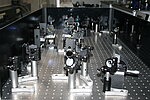
NOPA (Noncollinear Optical Parametric Amplifier)
The NOPA can be used to generate ultrashort pulses with variable wavelengths between 480 and 1600 nm from the output of the Solstice. The pulse durations are well below 30 fs throughout the visible and below 50 fs in the NIR. The spectral range around 800 nm can be accessed via whitelight generation with 1000-nm-pulses from the TOPAS.
Two-photon induced fluorescence spectroscopy

Two-photon induced flourescence spectroscopy
Acquiring broadband (550-1600nm) two-photon absorption spectra by monitoring the intensity of fluorescence emission induced by two-photon absorption.
Two-photon polarization dependend measurements.


